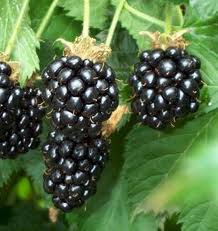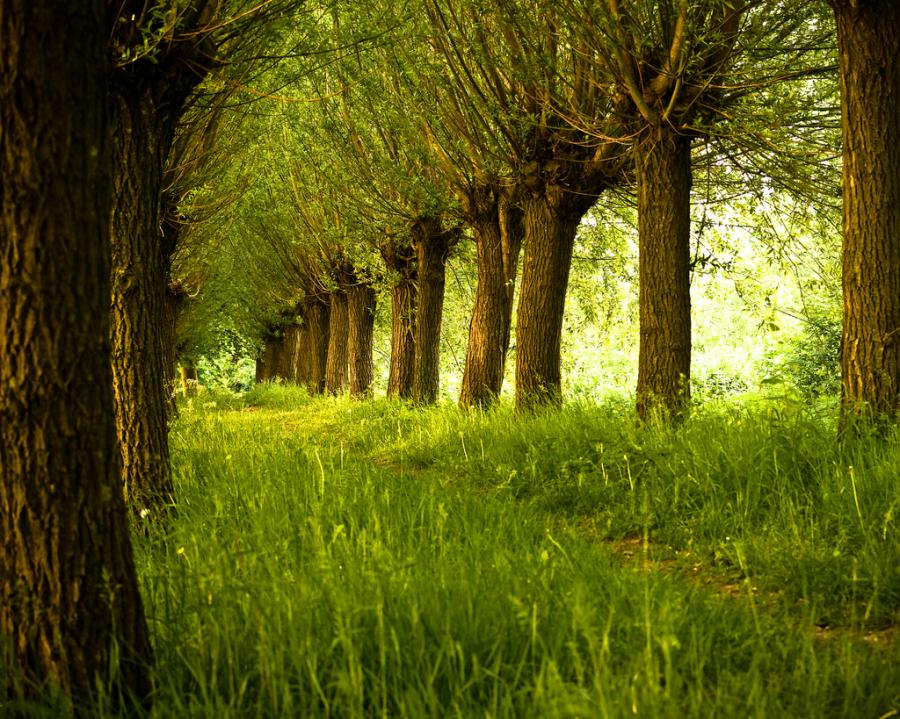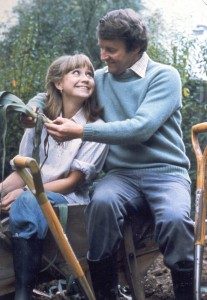Point of view, thinking differently… Consider:
What if plants are more goal-orientated than we think them to be? After all, we put ourselves on the top of the list, whatever that list is, and that placement, deserved or not, skews our view and thinking. What if trees and grass are in a war to dominate the earth? The trees for most of history were winning. But now grass has human help.
 For some grasses, the battle plan is to accept some losses (literally off the top) for domination. If you don’t mow a lawn, the trees win. Mow a lawn, grass dominates. Thus grass, so to speak, is using humans to fight trees. That’s rather curious because far more trees are beneficial in some way than grasses, and much more edible. Each lawn of decapitated grass is local battle between grass and trees, and the non-edible grass is winning while consuming a lot of green to stay green.
For some grasses, the battle plan is to accept some losses (literally off the top) for domination. If you don’t mow a lawn, the trees win. Mow a lawn, grass dominates. Thus grass, so to speak, is using humans to fight trees. That’s rather curious because far more trees are beneficial in some way than grasses, and much more edible. Each lawn of decapitated grass is local battle between grass and trees, and the non-edible grass is winning while consuming a lot of green to stay green.
 In one of the articles here, I mention that in Tasmania the wild blackberry is considered an extreme nuisance. Ponder that for a moment: A self-tending annual edible plant with delicious food and medicinal uses is a state-declared nuisance. Isn’t that more a problem of utility than definition? Most of the “noxious” weeds listed by most agricultural authorities are in fact edible. Let’s call them Forgotten Food. The problem is we don’t eat the weeds any more. We get our food pre-managed instead of really gathering it ourselves, or growing it.
In one of the articles here, I mention that in Tasmania the wild blackberry is considered an extreme nuisance. Ponder that for a moment: A self-tending annual edible plant with delicious food and medicinal uses is a state-declared nuisance. Isn’t that more a problem of utility than definition? Most of the “noxious” weeds listed by most agricultural authorities are in fact edible. Let’s call them Forgotten Food. The problem is we don’t eat the weeds any more. We get our food pre-managed instead of really gathering it ourselves, or growing it.
 Setting aside for a moment my name, it’s not unreasonable to ask why is there so much lawn? Don’t misunderstand me, lawns can be nice. I’ve had some mighty good moments on lawns. Parks, golf courses, monuments and cemeteries can benefit from lawns. But do you realize lawn grass is the second larges crop in America only after corn, another grass. I am not sure humans should be helping lawn grass dominate the flora of the world nor should we be herbiciding edible weeds. Food is food. Only an obese nation values decapitated grass. There are no “noxious” edible weeds in Ethiopia. When I was last a visiting relatives in Greece, I saw perhaps a hundred square feet of lawn, total. Clearly nations can get by without lawns.
Setting aside for a moment my name, it’s not unreasonable to ask why is there so much lawn? Don’t misunderstand me, lawns can be nice. I’ve had some mighty good moments on lawns. Parks, golf courses, monuments and cemeteries can benefit from lawns. But do you realize lawn grass is the second larges crop in America only after corn, another grass. I am not sure humans should be helping lawn grass dominate the flora of the world nor should we be herbiciding edible weeds. Food is food. Only an obese nation values decapitated grass. There are no “noxious” edible weeds in Ethiopia. When I was last a visiting relatives in Greece, I saw perhaps a hundred square feet of lawn, total. Clearly nations can get by without lawns.
What lawn I have is a greens keeper’s nightmare. I intentionally grow most of the weeds virtually hundreds of millions of dollars are spent on every year trying to keep out of lawns: Chickweed, pellitory, spiderwort, wild lettuce, sow thistle, dayflowers, dandelions, pennyworts, spanish needles, mustard, sorrel, hawksbeard and betony. Into salads and cooked greens they go, nutritious and no approve chemicals that might be recalled next week because they might make me glow in the dark a decade from now. For most of the year my little lawn, which is about 30 by 40 with over a dozen trees, provides me a with a steady supply of organic greens (and some roots.) I don’t have to do much for the bounty, except harvest and fend off local authorities.
One year they said my weeds were over 18-inches high, thus violating the residential code ordinance. I agree you can’t have a “Good Neighbors” farm in a cul-du-sac neighborhood. But this was tended, not over grown, not wild nor abandoned…. a natural garden, food for my table, not “weeds.” I won my case by pointing out the ordinance said weeds that were “unintentionally” over 18 inches tall were in violation. I countered my weeds, which I could identify by their Latin names and cook for any inspector who wanted to dine with me, were intentionally over 18-inches high thus not in violation. The truth is only two or three of them can even reach 18-inches and I won on a technicality rather than convincing them of the wisdom of being green.
There are, I think, three issues: First, a lot of jobs are involved with the maintenance of lawns and the death of edible weeds. What a resource that would be if put towards fostering Forgotten Foods rather than killing them. Next, a century ago lawns were an affectation, now they are standard. Some lawns in some places are fine, the national mall comes to mind and the veteran cemetery that will hold me one day. But it is time stop making them a standard residential feature. They need to be uncommon again, and thus I think, then more appreciated for what they are.
 And of course there are ordinances, which need to be eased a bit. Why, after all, is a seven-foot deadly oleander acceptable on a lawn but not an edible 20-inch Tradescantia? It is said politics make odd bedfellows. It seems to me the left and the right have a meeting point in the greenery arena. I put no pesticides or herbicides my lawn. That is certainly good in the long run for me, my neighbors and the aquifer. I am responsible for my lawn’s maintenance. I don’t hire illegals to decapitate it using Arab oil in a Japanese lawnmower brokered by someone in India imported on a Chinese ship. We need to start rethinking the idea of a lawn as lawn when it should be a place for trees and edibles. And while we do need to be cognitive of residential values we need start changing ordinances that say yes to expensive grass and toxic ornamentals but no to food-producing landscapes and Forgotten Food. Edible landscaping can be just as attractive as poisonous landscaping. It costs less, is far safer, and provides a nutritious return. Lawns are winning in their war against trees. I think we need to change sides.
And of course there are ordinances, which need to be eased a bit. Why, after all, is a seven-foot deadly oleander acceptable on a lawn but not an edible 20-inch Tradescantia? It is said politics make odd bedfellows. It seems to me the left and the right have a meeting point in the greenery arena. I put no pesticides or herbicides my lawn. That is certainly good in the long run for me, my neighbors and the aquifer. I am responsible for my lawn’s maintenance. I don’t hire illegals to decapitate it using Arab oil in a Japanese lawnmower brokered by someone in India imported on a Chinese ship. We need to start rethinking the idea of a lawn as lawn when it should be a place for trees and edibles. And while we do need to be cognitive of residential values we need start changing ordinances that say yes to expensive grass and toxic ornamentals but no to food-producing landscapes and Forgotten Food. Edible landscaping can be just as attractive as poisonous landscaping. It costs less, is far safer, and provides a nutritious return. Lawns are winning in their war against trees. I think we need to change sides.





I agree! I was just thinking to myself before I read this article, “Why do people like grass so much?” Really, we don’t need so much of it. Its not natural. Personally, I believe we need to go back to our old ways, in that we grow our own food, have local farms, not these consumerist fields of monocrops toxinated with hormones and pesticides and such. Its just not right.
My ‘lawn’ is nonexistent. The only reason I pull up sprouting trees is because there are so many of them already.
During my wanderings I have noticed something, and reached a conclusion that I cannot prove, but find worth mentioning nonetheless. I see far, far fewer fire-ant mounds in the woods than in pastures. I can’t help but wonder if the reason is nothing more than numbers. That is, in a three-dimensional world with trees and bushes, etc, there are more things out there to eat the occasional new mother ant as she looks to start a new colony. But in a two-dimensional world, a pasture, or lawn, for example, she has more time to land and find shelter. Thus our never-ending, losing, battle with fire-ants on our manicured lawns. So maybe we shouldn’t have picked a side in the grass vs trees war, and maybe we picked the wrong side as well.
Fellow backyard salad-er here! I save my front yard for most of my trees and bushes, and pretty tropicals and lillies, so the neighbors don’t get mad. Weeds in the back.